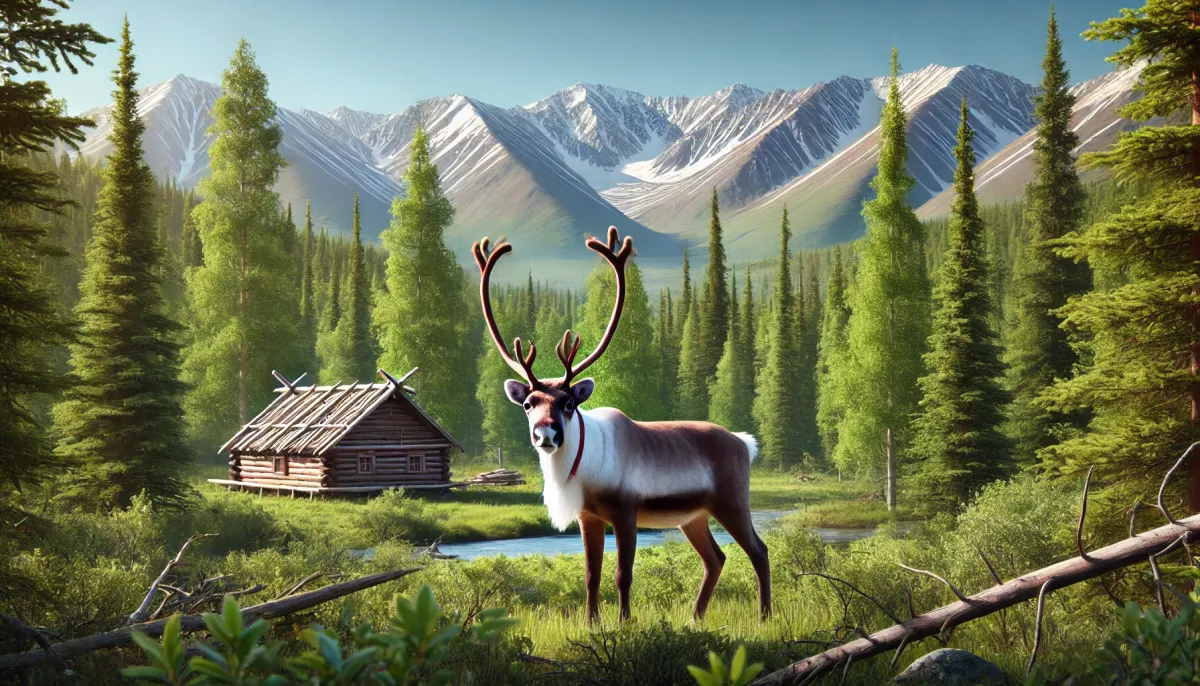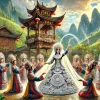Hey everyone, Mark here! I'm a seasoned backpacker with a serious wanderlust, and my latest adventure took me to a place I never expected to find – the Oroqen Autonomous Banner in Inner Mongolia, China. This isn't your typical tourist destination; it's a journey into the heart of a unique culture, a place where the past and present collide in the most fascinating way.
Meeting the Oroqen People: Guardians of the Reindeer
My trip began with a visit to the Oroqen people, often called the "last hunting tribe of China." Their history stretches back centuries, their lives intrinsically linked to the reindeer. I learned that the name "Oroqen" actually means "people who live in a place with lush forests," specifically, forests rich with poplar trees. Imagine that - a culture so deeply entwined with its environment! They migrated from the Lena River Basin over 300 years ago, settling deep within the Greater Khingan Range, relying on hunting and reindeer herding for survival.
I was immediately struck by the beauty and raw power of the landscape, a stark contrast to the bustling cities I'm used to. Their reindeer, which are a different breed than the ones we often associate with Christmas imagery, are majestic creatures, their antlers impressive displays of nature's artistry. I even got to see the reindeer up close and personal - quite a sight! These aren't just any deer; they’re a crucial part of the Oroqen people’s way of life. They provide transportation, sustenance, and serve as potent symbols of their identity. This is a culture rich in tradition, one that truly connects with nature.
The Significance of Reindeer in Oroqen Culture: A Symbol of Survival and Heritage
The reindeer aren’t just animals to the Oroqen people; they’re family. I spoke with Maria So, the last female chief of the Oroqen tribe (yes, a female chief!), who shared incredibly personal stories. She described how growing up, she learned alongside her parents, from the tender care of the reindeer to the thrilling hunt. A reindeer in the Oroqen family is akin to a prized cow in early Taiwanese agricultural society; it's the foundation of their livelihood. Maria's wedding dowry consisted of six reindeer, a significant gift in their culture. In her prime, she oversaw a remarkable herd, a testament to the Oroqen people’s connection to their animals. It’s a fascinating parallel to the importance of livestock in other agricultural societies around the world.
From Hunting Grounds to Tourism: A Changing Landscape
Times have changed for the Oroqen people. While hunting remains part of their heritage, it's been largely replaced by tourism and reindeer herding as the primary means of sustenance. In 2003, the local government relocated them to the foothills, encouraging them to embrace a new form of livelihood that balanced their cultural preservation with economic advancement. This transition mirrors the experiences of many indigenous groups globally. It is interesting to note the efforts made to both preserve their culture and to assist them in adapting to a modern world. It's a delicate balance; finding a way to preserve their heritage while embracing change.
Beyond the Oroqen: Exploring the Genhe Wetlands
My journey didn't end with the Oroqen people. I also explored the Genhe Wetlands, hailed as the largest wetland in Asia. This breathtaking landscape is a haven for biodiversity, a testament to the natural wonders of Inner Mongolia. The sheer scale and pristine beauty of the wetlands are truly awe-inspiring. The Genhe River cuts through the landscape, creating a stunning tapestry of water and land. The wetlands are home to a wide variety of wildlife, including a significant percentage of the world's swan population, offering a truly unique and unforgettable experience for any nature lover.
Table of Key Information
| Feature | Description |
|---|---|
| Oroqen People | Last hunting tribe of China, known for reindeer herding and unique culture. |
| Reindeer Significance | Crucial for transportation, sustenance, and cultural identity. |
| Genhe Wetlands | Asia's largest wetland, a haven for biodiversity. |
| Location | Greater Khingan Range, Inner Mongolia, China |
| Key Experience | Immersion in Oroqen culture, witnessing reindeer herding, exploring pristine wetlands. |







